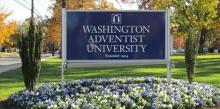Education
Story by Donna Bigler
Choral performances by high school students from high school schools will be featured at the 2017 Choral Festival that is being hosted by Washington Adventist University (WAU) from February 8-11. Students from seven academies in the Columbia Union Conference of the Seventh-day Adventist Church will participate in the festival. They will stay on campus, take master classes, rehearse and offer three concerts that will be open to the public.
The concerts will be held:
 Story by Ron Mills
Story by Ron Mills
While most of their schools’ home economics programs include instruction in cooking, finances and sewing, very few, if any, teach true fashion (style, technique and usage of dress). Faced with the fashion challenges of today, our young people need a solution. For Takoma Academy, the solution would be spearheaded by one of their own—Toni Horne.





